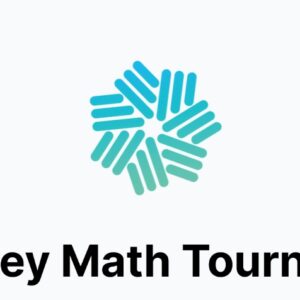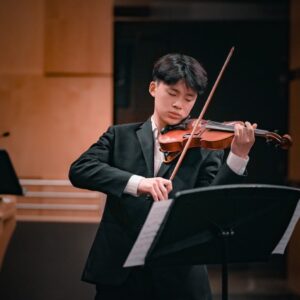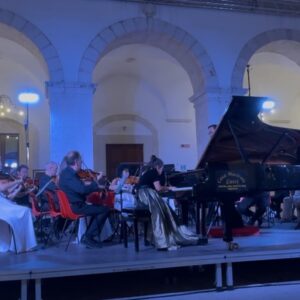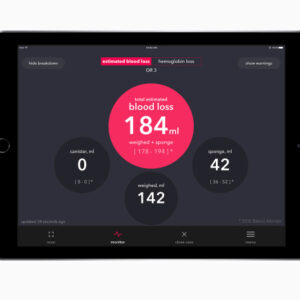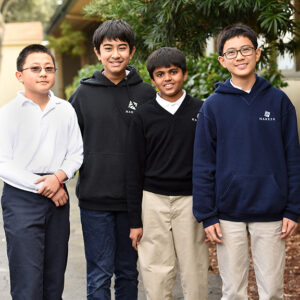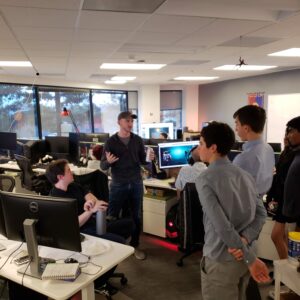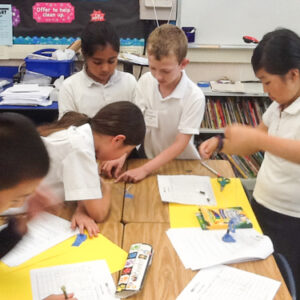This article was originally published in the fall 2012 Harker Quarterly.
Siddarth Satish ’06 certainly knows how to get extra mileage out of his graduate work. What began as a study for his master’s thesis led to his becoming a finalist in a prestigious contest, followed by the successful launch of an innovative startup company.
Last year, thanks to his graduate work on blood loss monitoring, Satish became part of the only finalist team representing Stanford University to compete in Saving Lives at Birth: A Grand Challenge for Development Partners.
The contest, sponsored by the U.S. Agency for International Development (USAID), the government of Norway, the Bill & Melinda Gates Foundation, Grand Challenges Canada and the U.K.’s Department for International Development, called for innovative solutions to save the lives of mothers and newborns around the time of birth and elicited more than 500 submissions from almost 60 countries.
Only 65 finalists, including Satish’s team, were selected to advance to the final stage of the competition, with a public vote online. Called “Lowest Mobile Platform for Real-Time Monitoring of Blood Loss,” Satish’s project was mentored under the co-advisement of Stanford University professors Michael Hsieh and Mark Gonzalgo, along with David Rempel, a professor at the University of California, San Francisco.
Although Satish and his group were not ultimately awarded grants, they attained the prestigious status of finalists and the project resulted in an innovative spin-off – Gauss Surgical Inc., a startup company he co-founded with CEO Dr. Milt McColl, a serial life sciences entrepreneur, former venture capitalist and former NFL linebacker (who won two Super Bowls with the San Francisco 49ers in the 1980s). The two co-founders, who are also entrepreneurs-in-residence at StartX, the Stanford student startup accelerator, were able to raise $1 million in seed funding last fall from several angel investors.
The health technology business uses the iPad as the base of a new method to help anesthesiologists monitor blood loss during surgery in real time, hoping to facilitate better intraoperative fluid management and more appropriate blood transfusions.
According to Satish, who serves as chief technology officer, the mobile medical platform uses the iPad to scan surgical surfaces that are covered in blood, chiefly pieces of gauze that soak up blood during surgery. Through an iPad app, those scanned images are sent to the cloud, where Gauss’ algorithms determine and deliver an estimate of how much blood is present.
Many surgical teams currently use visual estimation to determine how much blood a patient loses during procedures. However, overestimating or underestimating blood loss can contribute to patient complications, morbidity and mortality while increasing care costs.
While still under development, a final business model will likely be similar to those which hospitals are used to seeing with medical devices and software. The product will showcase at the American Society for Anesthesiologists’ and the Society for the Advancement of Blood Management’s annual meetings in the fall.
While clearly enthusiastic about his new business venture, Satish further shared some exiting news about his girlfriend, and Harker classmate, Alisha Tolani ’06. Tolani, who attended Stanford, was recently awarded a Fulbright scholarship by the Department of State and will be traveling to Honduras this fall. Similar to the USAID contest Satish had placed in, Tolani’s project involves a study of obstetrical outcomes among high- risk populations of laboring mothers in government hospitals.
“I think she’s particularly excited about putting her Spanish skills to great use after taking seven years of Spanish at Harker!” he said.
Both Satish and Tolani credit Harker’s encouragement of forward thinking with helping to pave the way for their future successes. “Although I pursued a technical path after high school, the true highlight of Harker for me was my involvement with debate,” said Satish, a former Harker debate captain.
“The skills that I developed as a debated I use every single day, both in my technical work and towards the business, as a model for thinking. I’d highly encourage students to get involved with debate, even if they are planning to pursue a technical degree in college,” he said.

